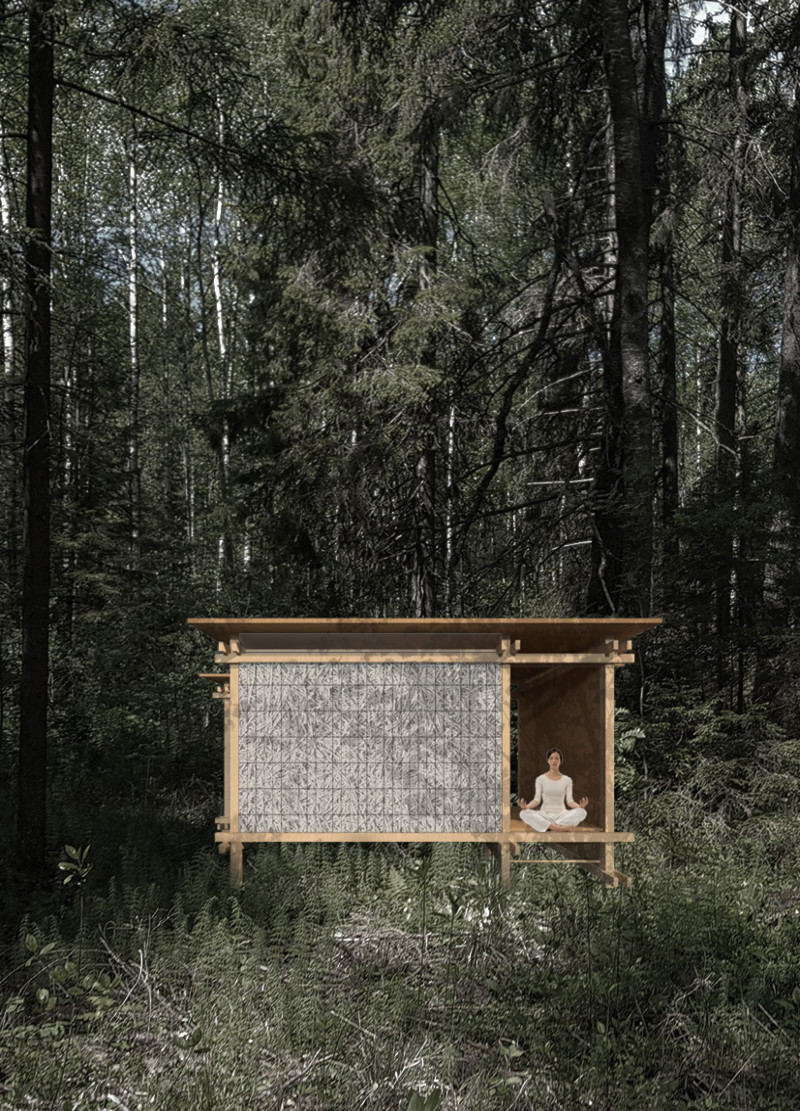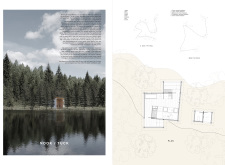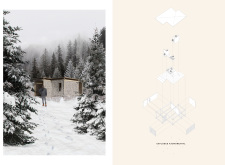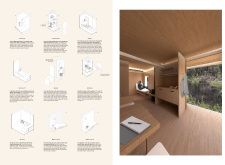5 key facts about this project
The architectural design employs a combination of lightweight materials such as plywood, traditional thatch, and large glass elements, successfully balancing durability with aesthetic appeal. The structure's footprint is carefully designed to minimize ecological disruption, establishing a respectful relationship with the surrounding forest and lake. Interior spaces are organized into zones that support meditation, relaxation, and essential utilities without compromising the overall flow of the retreat.
Unique Design Approaches
One of the most notable aspects of the Nook/Tuck project is its emphasis on integrating traditional Lithuanian architectural elements with modern techniques. This blend creates a culturally resonant space that pays homage to local heritage while addressing the needs of contemporary users. The use of thatch alongside structural timber not only reinforces sustainability but enhances the warm aesthetic of the retreat.
The incorporation of large, strategically placed windows provides panoramic views of the landscape, inviting natural light while blurring the boundaries between the indoor and outdoor environments. This design element is instrumental in facilitating a connection to nature, encouraging users to engage with their surroundings actively.
Architectural Layout and Functionality
The functionality of the Nook/Tuck project is evident in its well-considered spatial organization. Meditation spaces are open and flexible, allowing for various configurations that can adapt to the user's preferences. Resting zones include built-in platforms for comfort, enhancing the retreat's core function of relaxation. Utility areas are integrated discreetly to maintain the retreat's tranquil atmosphere.
Overall, the Nook/Tuck retreat exemplifies a thoughtful architectural approach that merges form with function, offering a distinctive environment for reflection and rejuvenation. This project serves as a model for future designs aiming to enhance user experience while prioritizing ecological stewardship and cultural context. For further details, readers are encouraged to explore the architectural plans, architectural sections, and architectural designs that provide deeper insights into the project's intent and execution.


























